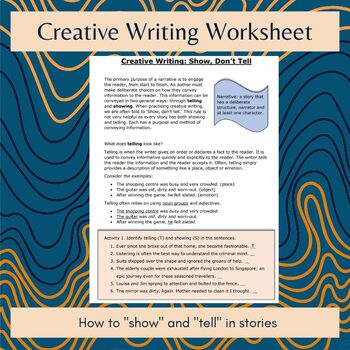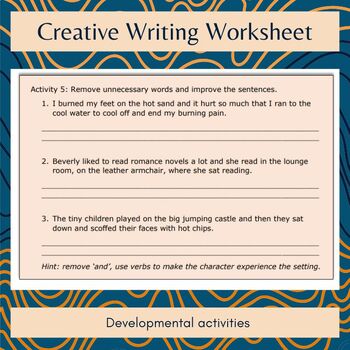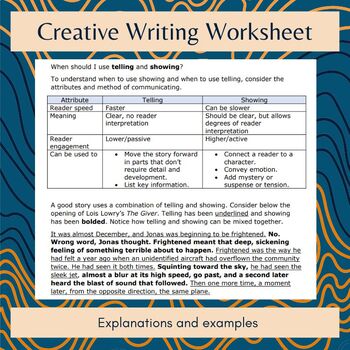Creative Writing Worksheet: Show, Don't Tell
- Zip
Description
The 'Show, Don't Tell' rule is false. Good storytelling uses both showing and telling. Help middle and high school students understand the writer's craft of showing and telling with explanations, examples and practice activities. This worksheet develops in complexity and helps students understand the the purposes, structures and techniques of showing and telling in creative writing and storytelling.
The model examples and explanations cover:
- What does telling look like?
- What does showing look like?
- When should I use telling and when should I use showing?
- How to structure showing sentences?
The activities include:
- Identifying showing and telling sentences.
- Comparing the effects of showing and telling sentences.
- Changing telling sentences into showing.
- Writing showing sentences where a character experiences setting.
- Editing showing sentence structure and removing padding.
Other writing resources
Writing Skill: Synthesis (free)
Writing Skill: Editing and Proofing (free)
Essay Planner: Australia in WW2
Essay Planner: Romeo and Juliet
Film Review: Editable Scaffold
---------------------------------------------------------------------------------------------------------------
Remember the rule of threes!
1. Check out my other products.
2. Follow me.
3. And thanks for being a teacher. You're making a difference!
----------------------------------------------------------------------------------------------------------------





